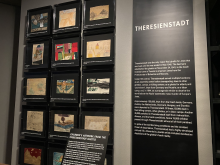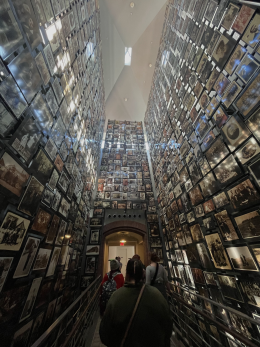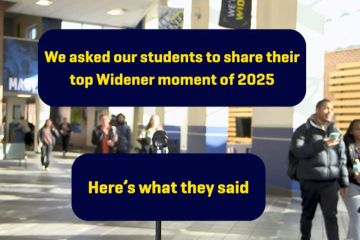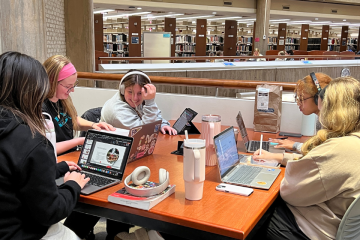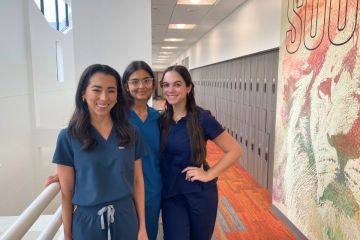Urban Excursions Inspire Deeper Connections Between the Classroom and World

There is always an opportunity for students at Widener to take their learning outside of the classroom. Broadening their horizons, university-sponsored trips allow students to engage in a different environment while gaining a better understanding of concepts reflected in class.
Through urban excursion grants, professors at Widener can utilize this grant money to give their students a hands-on learning experience. This grant program permits professors to take their students on day trips to a metropolitan area. Widener is accessible to many enriching cities that allow students and faculty to plan daylong trips. Overall, the trips cater toward providing a more in-depth experience and engagement for students because they can observe concepts connected to what students learn in the classroom. Students, their peers, and faculty alike build a stronger bond among themselves through these trips as they have deeper conversations about lessons learned in class, while also sharing a unique experience.
Every year, the Center for Education at Widener takes undergraduate education majors on a trip to a museum. This year, organizers Associate Professor Dana Reisboard and Professor Nadine McHenry, planned a trip to the U.S. Holocaust Memorial Museum in Washington D.C.
A couple of weeks before our trip, the education majors watched a film about the Holocaust and discussed it afterward as a whole group. This was used to supplement our learning before we arrived at the museum. I felt more prepared and thought it was beneficial to receive preliminary information and talk about what we might expect and see before the museum.
Arriving in Washington D.C., we had some time to walk around The National Mall before our group could go through the museum at our designated time. Since it was a beautiful day, it was pleasant to walk around and admire the Washington Monument and Capitol Building among other historic buildings in the area.
When it was time for our group to go to the museum, the elevator took my small group to the third floor. We were given a little booklet of a real person who lived during the Holocaust that we were able to connect to a part of the exhibit. It was surreal to imagine that I was reading about someone’s life. We were surrounded by music, videos, photos, physical artifacts, and textual information that helped me gauge the true and horrid realities of the Holocaust.
As we traveled down floor by floor, I remember feeling enthralled with all the information that we absorbed. There was a room specifically dedicated to listening to the voices of those who survived the Holocaust. The room included a binder so that I could follow along and engage with their stories fully. Listening to their voices was an unbelievable experience because they shared their stories with great emotion and detail.
I recall feeling waves of emotion throughout the entire exhibition. Listening to real accounts of the Holocaust, watching videos of the events leading up to and during the Holocaust, to view all the physical artifacts of clothing and supplies, I felt incredibly heavy and mindful throughout the museum.
This was the first time I visited the Holocaust Museum or ever learned about the Holocaust in depth, and this trip allowed me to absorb so much information. I feel grateful to have had this opportunity to engage in such an eye-opening experience with my peers and faculty members as we were all learning and growing together in the same space.
As an education major, I found the trip to be valuable because, as a future educator, it is important to be able to understand this tragic, yet critical event in history and be able to share this information with my future students. This trip to the U.S. Holocaust Memorial Museum opened my perspective to matters greater than mine and helped me see more ways that I can create a more inclusive environment in my future classroom.

